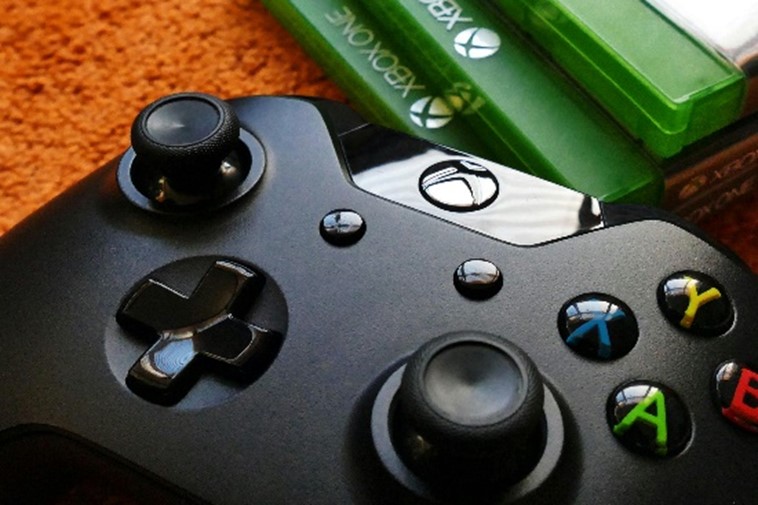The Complex World of Video Game Patents: Insights from CEIPI IP Business Talk with Dr. Marta Bettinazzi
The video game industry is not only an entertainment juggernaut but also a fertile ground for complex IP issues. From creative copyrights to strategic trademarks and increasingly, software patents—video games are rich with legal touchpoints that demand attention. In a recent session of the CEIPI IP Business Talks, Dr. Marta Bettinazzi, an Italian IP lawyer with deep expertise in both IP law and modern IP strategy, joined host Alexander Wurzer for a deep dive into the intersection of gaming and intellectual property.
While the conversation spanned a wide array of topics, including business models, digital ownership, and user-generated content, one theme stood out for its depth and relevance: the patentability of video games. This post offers a comprehensive summary of that discussion, drawing attention to the evolving nature of patents in the gaming world and why this subject is becoming increasingly important for developers, investors, and legal professionals alike.
The Rich IP Landscape of Video Games
At the outset, Dr. Bettinazzi laid the groundwork for understanding the IP ecosystem in gaming. As she noted, video games incorporate nearly every form of intellectual property imaginable—copyright (for code, narrative, and music), trademarks (for logos, titles, and even in-game symbols), design rights (for graphical user interfaces), and trade secrets (particularly concerning source code and proprietary algorithms).
One type of IP that stands out, however, is the patent—particularly when video games implement technical innovations that go beyond aesthetic and narrative creativity. While still somewhat under-discussed compared to copyright and trademarks, patents are slowly gaining prominence in this space, especially as games become more technologically advanced.
What Makes a Video Game Patentable?
The first major question tackled in the discussion was a fundamental one: What aspects of a video game can be patented? According to Dr. Bettinazzi, patentability hinges on one key criterion—technical innovation.
Unlike copyright, which automatically protects creative expressions like storylines, code, or music, a patent must meet higher thresholds. It must present a novel, non-obvious, and industrially applicable solution to a technical problem. In video games, this might include:
- Innovative graphics rendering techniques.
- Unique user interface mechanisms.
- Algorithms that manage online multiplayer environments.
- Sophisticated resource management systems.
- Technical solutions for latency reduction, physics simulations, or AI behavior.
A prime example discussed in the talk was a soccer game patent from 2003. This patent covered a feature displaying off-screen players to aid in passing decisions—something seemingly simple but categorized as a technical solution because it improved the player’s control and visibility, thereby enhancing gameplay functionality. This was enough to be deemed patentable under European law, which is typically more conservative than the U.S. in terms of software patents.
Regional Nuances and Legal Hurdles
One of the most enlightening parts of the talk was the contrast drawn between jurisdictions. Europe, represented by the European Patent Office (EPO), has traditionally been stricter about what software-related inventions are considered technical. Dr. Bettinazzi pointed out that patents purely on game rules are not allowed. However, if the rule or feature solves a technical problem using a technical means, it becomes eligible.
In contrast, the United States tends to be more permissive—often allowing broader protection for software and gameplay mechanics. For international developers and publishers, this means carefully strategizing where to file and enforce patents.
As Woodson noted, simply saying “I’ll only release my game in a different jurisdiction” to avoid an existing patent is rarely viable. Digital platforms are global, and avoiding patent infringement requires early-stage legal planning and jurisdictional awareness.
Why the Industry Hesitates with Patents
Despite the technical innovations within games, the video game industry has historically been hesitant to embrace patents as aggressively as sectors like telecom or pharmaceuticals. Dr. Bettinazzi touched on this cultural dimension, noting that many within the industry view patenting core gameplay or mechanics as unfair or anti-competitive.
There’s an informal code in some parts of the community that game design should remain open—perhaps a legacy from the early, collaborative days of game development. However, as large studios increasingly look to protect their investments, this sentiment is gradually eroding.
Still, there is friction. For example, when Warner Bros. received a patent on a particular gameplay system, it triggered debate in the development community. The issue wasn’t just the legal right to exclude others—it was the chilling effect on creative innovation that such monopolies might induce.
Strategic Use of Patents in Gaming
The conversation made it clear that savvy companies are learning to use patents strategically, even in an industry traditionally dominated by copyright. Several methods were discussed:
1 . Secondary Trademarking and Design Registration
Studios are registering not only core IP like logos but in-game symbols, icons, and interfaces as trademarks or designs—once they gain recognition and distinctiveness.
2 . Patent Portfolios for Licensing and Defense
While not common among indie developers, larger studios are building patent portfolios both to protect innovations and to engage in cross-licensing agreements. In some cases, these patents can become valuable assets for acquisitions or partnerships.
3 . Using Patents to Safeguard Monetization Models
Microtransactions, loot systems, and other monetization mechanics may rely on backend systems that are patentable. Protecting these innovations can be crucial, particularly when they underpin revenue streams.
Patents and the Open-Platform Challenge
Another complexity arises in the era of user-generated content and open-world environments. Dr. Bettinazzi discussed how today’s games often invite players to contribute to the game’s evolution, raising questions about authorship and inventorship.
For example:
- If a player creates a technically innovative feature or object using a game’s sandbox tools, who owns that IP?
- If a developer integrates this contribution into a future game release, is there an obligation to credit or compensate the player?
While the discussion didn’t resolve these questions definitively, it highlighted how user interaction is blurring traditional boundaries of authorship and ownership—something IP law is still catching up with.
The Moral Rights Dimension
Beyond economic rights and patent protections, moral rights—particularly the right to be identified as the author—also came up. Dr. Bettinazzi recalled the controversy between Hideo Kojima and Konami, where Kojima’s name was removed from game materials after their professional split.
Even when economic rights are assigned to a company, moral rights often remain with the individual—depending on jurisdiction. This issue underscores the emotional and reputational value that creators attach to their work, beyond commercial considerations.
So, Should You Patent Your Game?
For game developers, especially startups or independents, the question remains: is patenting worth it?
Dr. Bettinazzi’s answer was measured. She acknowledged the complexity and cost of patenting, especially across multiple jurisdictions. However, she also emphasized that if your game introduces a genuine technical innovation, a patent could be a powerful strategic asset—both for protecting your IP and for increasing company valuation.
Importantly, she advised developers to consult with IP professionals early in the development cycle. By identifying potentially patentable features ahead of time, studios can make informed decisions about where and when to file, and avoid unintentional disclosures that might destroy novelty.
Conclusion: A New Era of IP Strategy in Gaming
The CEIPI IP Business Talk with Dr. Marta Bettinazzi offered a nuanced, insightful look into the shifting legal landscape of video games. As games become more technologically sophisticated and integrated into global digital ecosystems, the importance of strategic IP management—including patents—is rising.
Whether you’re a solo developer tinkering with game mechanics in Unity, or a studio executive overseeing a AAA title, understanding the patent potential of your innovations is no longer optional—it’s essential. As Dr. Bettinazzi and Alexander Wurzer made clear, the industry is evolving, and those who align their legal strategies with their creative ambitions will be best positioned to thrive.
Stay tuned to the CEIPI IP Business Talks series for more deep dives into how intellectual property shapes today’s innovation economy. For developers, lawyers, and entrepreneurs alike, these conversations are a goldmine of practical insights in an increasingly complex world.
Photo by Anthony at Pexels



